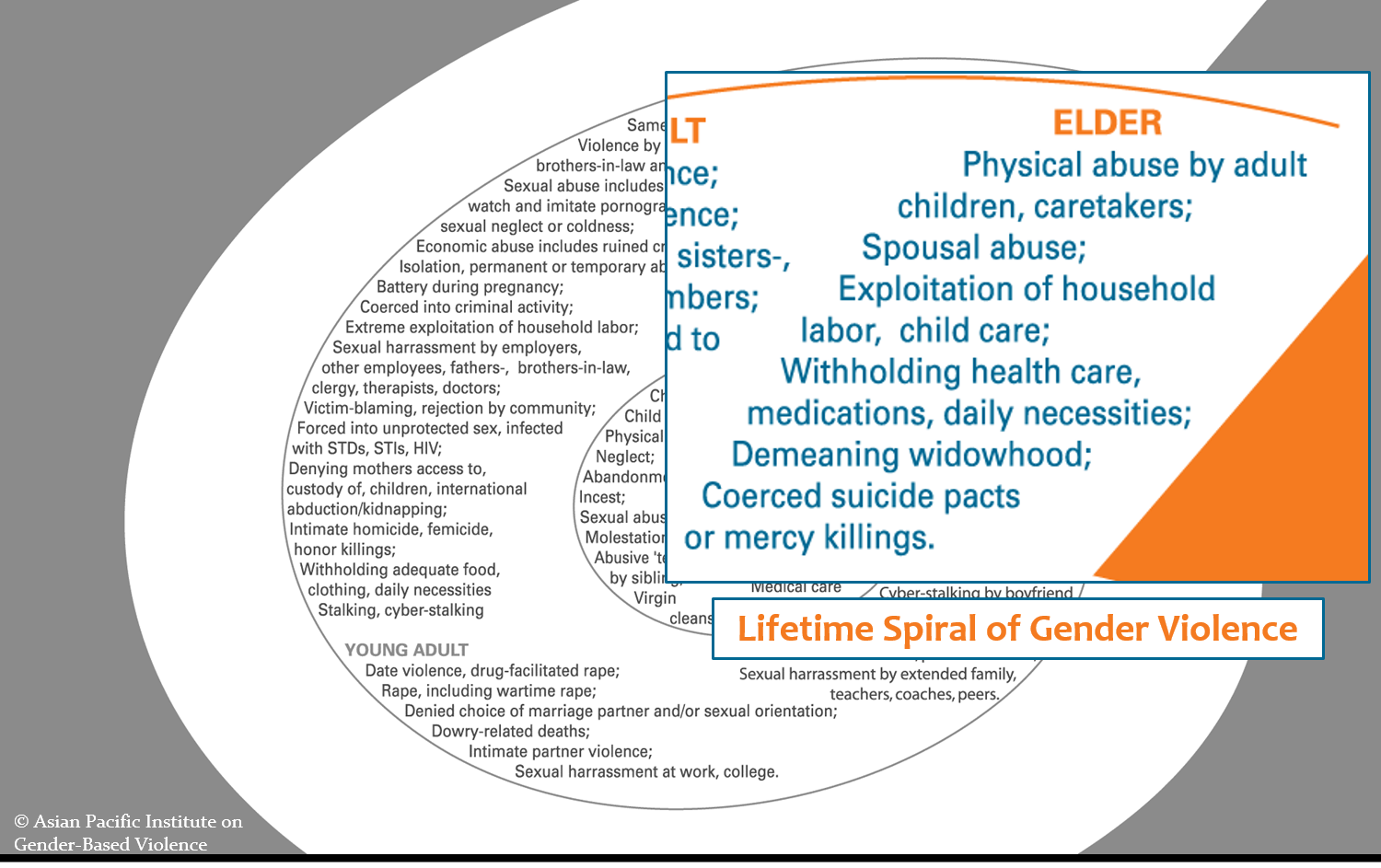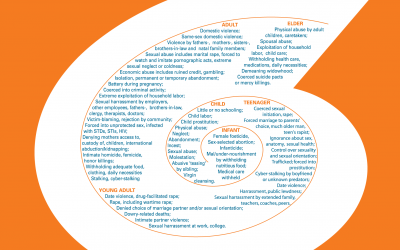Elder Abuse
“For many survivors of abuse in later life, being female, rather than being older, may be the defining aspect of why they experience violence — regardless of perpetrator.”
Elder Abuse Definition Includes Intimate Partner Violence
The older U.S. API population
- 86% of Asian Americans over 65 are foreign-born, significantly more than any other racial group.
- 27% of Native Hawaiians or Pacific Islanders over 65 are foreign-born.
- 60% of Asians and Pacific Islanders over 65 have limited English proficiency.
Data from U.S. Census 2009-2011 ACS, 3-year estimates
Statistics on Elder Abuse
- A comprehensive review article estimated the prevalence of elder abuse to be approximately 10%, including physical, psychological, verbal, and sexual abuse, financial exploitation, and neglect.
Lachs MS & Pillemer KA. 2015. Elder Abuse. New England Journal of Medicine. 373:1947-1956.
Additional information and statistics on demographics, prevalence of abuse, perpetrators, and types of elder abuse is available from the National Council on Elder Abuse (NCEA) webpage on statistics and data.
Language Access for Elderly Survivors Who are Deaf or Have Limited English Proficiency
Download our Tipsheets on Language Access
- Considerations when Using Interpreters for Victims with Limited English Proficiency
- Serving Individuals who are Deaf, Hard of Hearing, or Deaf-Blind and Do Not Use American Sign Language
Additional tipsheets on language access are available here.
Resources on Elder Abuse
Lifetime Spiral of Gender Violence
The Lifetime Spiral reveals patterns of victimization by enumerating the types of violence, vulnerabilities, and harms women and girls face.
Elder Abuse in Asian Families: Contexts and Dynamics, 2015
These training slides enumerate several types of abuses faced by API elders while offering recommendations for advocates.
Survivors in the Margins: The Invisibility of Violence Against Older Women, 2015
Crockett C, Brandl B, & Dabby C. 2015. Journal of Elder Abuse & Neglect. 27(4-5): 291-302.
This article explores how the lack of gender analysis in the elder abuse field increases older survivors’ invisibility and calls for applying a lifespan approach to abuse.
Mistreatment of Asian Pacific Islander Elders, 2013
Published by National Council of Elder Abuse (NCEA), this research brief synthesizes the latest available information and research relating to the mistreatment of API elders.
Aging With Respect: An Elder Abuse Early Intervention and Prevention Safety Card
By Futures Without Violence & National Clearinghouse on Abuse in Later Life
Aging with Respect is an intervention addressing elder abuse, neglect and intimate partner violence with those later in life utilizing the Aging with Respect safety card. It is developed for those patients/clients with agency and capacity in non-crisis, non-emergency situations that provides information about healthy and safe relationships, and the impact of unhealthy relationships on health and wellbeing. Topics include financial, emotional, and physical abuse and exploitation, education and prevention strategies, and information on seeking support.
Other Resources
National Asian Pacific Center on Aging: works to preserve and promote the dignity, well-being, and quality of life of Asian Americans and Pacific Islanders as they age.
- Data brief on API elders in the United States (2013)
- The Experiences, Perceptions, and Help-Seeking Behaviors of Elder Mistreatment among Asian American and Pacific Islander Older Adults Participating in Senior Community Service Employment Program (2014)
National Center on Elder Abuse: provides the latest information regarding research, training, best practices, news and resources on elder abuse, neglect and exploitation to professionals and the public. Maintains a directory of state resources on elder abuse and a collection of publications on elder abuse prevention and intervention.
- Research brief on mistreatment of API elders (2013)
- Research brief on mistreatment of LGBT elders (2013)
- Research brief on abuse of adults with a disability (2012)
- Other research briefs on elder abuse, neglect, and exploitation
National Clearinghouse on Abuse in Later Life: provides advocacy and education to challenge and change the beliefs, policies, practices, and systems that allow elder abuse to occur and continue. Offers a collection of publications and resources to help others better understand and respond to abuse in later life.
- Advocates’ Toolkit includes Working with Older Survivors of Abuse: A Framework for Advocates (2016) and the Abuse in Later Life Education Series for Advocates (2017)
VAWnet: Special Collection on Preventing and Responding to Domestic & Sexual Violence in Later Life (2016)




